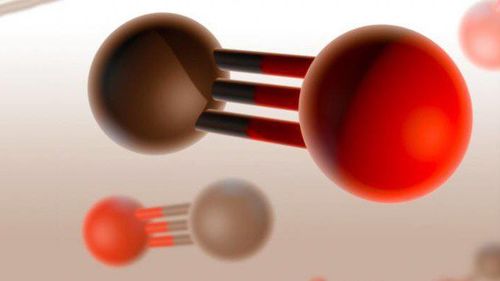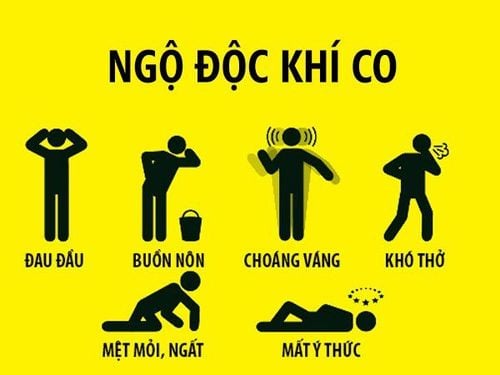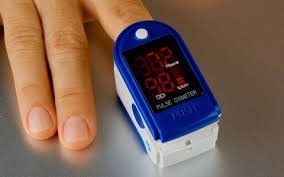This is an automatically translated article.
CO poisoning or coal smoke poisoning is poisoning caused by inhaling carbon monoxide (CO) quite common and happens to many people. Carbon monoxide is a colorless, odorless gas that is extremely dangerous to humans. People with CO poisoning if not detected and treated in time will be very life-threatening.
1. General information about CO . poisoning
Carbon monoxide (CO) is a colorless, odorless, tasteless and non-irritating toxic gas. Commonly found sources of CO are: in fireplaces, gas, furnaces, water heaters, wood or coal-fired and kerosene-burning stoves, and gasoline-powered generators. The risk of carbon monoxide poisoning is also increased if stoves or sources of CO are used in an enclosed and unventilated space.
CO poisoning or poisoning by coal smoke is a highly fatal poisoning case that is encountered with many people today. When there is too much carbon monoxide in the air, it can reduce the ability to absorb oxygen because CO has a greater affinity for Hb in the blood than for oxygen.
Therefore, when CO is absorbed through the lungs, it will lead to damage to the lungs and other tissues in the body because the blood cannot carry out the task of transporting oxygen to the organs. It eventually leads to CO poisoning and has a high risk of death. Carbon monoxide is also a leading cause of fatal poisoning from unintentional poisons.
Signs of CO poisoning also vary and are often nonspecific, depending on the severity. Therefore, the timely detection and first aid of people with carbon monoxide poisoning need to be immediately to avoid health damage.
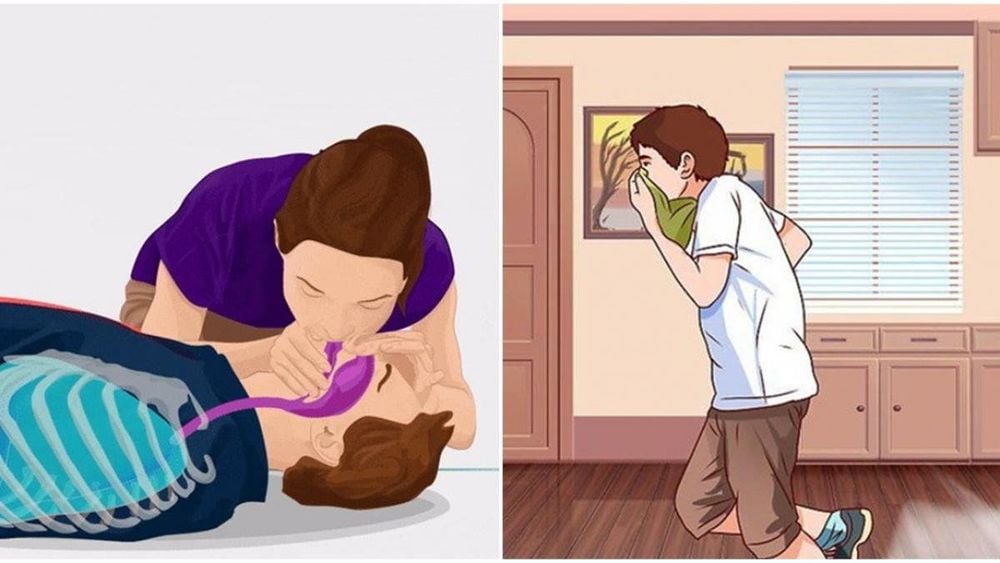
Việc phát hiện và cấp cứu kịp thời người bị ngộ độc khí carbon monoxide cần phải ngay tức khắc để tránh được những thiệt hại về sức khỏe
2. Signs to recognize when CO . poisoning
Symptoms of CO poisoning are often non-specific and are quite similar to some other common illnesses such as the flu. The recognition of poisoning from coal smoke through the following signs and symptoms:
Slowness, headache is the most common sign Weakness, fatigue Dizziness, nausea Inability to concentrate Vomiting Chest pain Loss of consciousness consciousness, confusion, behavioral disturbances Irritability, eye problems such as blurred vision, shortness of breath, cardiac arrhythmias, muscle spasms, convulsions, coma, fainting Risk factors may increase The risk of carbon monoxide poisoning from vulnerable populations includes:
Pregnant women Young children Elderly people People with a habit of smoking People with cardiovascular disease, anemia or respiratory problems People who work in closed factories and factories with many engines and machines emit a lot of CO. Carbon monoxide poisoning can be very dangerous for people who are sleeping or drunk. It can even cause death without detecting any signs. Therefore, if you suspect CO poisoning or see someone showing signs of poisoning. Get out of the CO2 area quickly and into a well-ventilated area, then seek medical attention immediately.
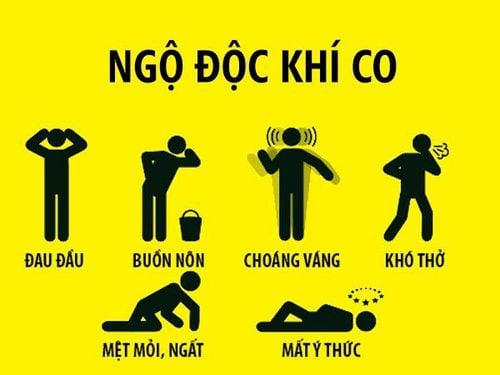
Các dấu hiệu nhận biết ngộ độc khí carbon monoxide như: mệt mỏi, chóng mặt buồn nôn, khó thở, mất ý thức,...
3. Diagnosis and treatment
If CO poisoning is suspected, the doctor will do a physical exam and may order a blood test to measure the amount of carbon monoxide in the blood to measure the amount of carbon monoxide in the blood.
About treatment: CO poisoning is a medical emergency. Treatment will aim to replace carbon monoxide in the blood with oxygen as quickly as possible, in order to get rid of CO in a timely manner. In the hospital, it is possible to let the patient breathe in pure oxygen through a mask placed over the nose and mouth. This will help circulate oxygen to organs and tissues.
In some other cases, hyperbaric oxygen therapy is recommended. With this method of therapy, doctors will use a pressurized whole body cavity. Inside this cavity, the air pressure will be two to three times more than normal atmospheric pressure. This helps to speed the replacement of carbon monoxide with oxygen in the blood.
4. Measures to prevent CO . poisoning
To prevent CO poisoning we need to take the following measures:
Check indoor combustion sources to make sure they are properly installed and ventilated to the outside. Exhaust gas lines should be checked periodically if there is a leak problem. When starting any device such as a car, the garage door should be open, not allowed to run in a closed garage. Carbon monoxide detectors should be installed because they provide early warning of the presence of CO in the air. If CO is suspected in your home, immediately ventilate the house by opening a window. And people in the house need to be evacuated to another well-ventilated place. Do not use gas stoves, fireplaces, or charcoal or wood stoves in the home. Do not run the generator in a narrow and enclosed space. Carbon monoxide poisoning is extremely dangerous to human life. If you notice any of these signs of CO poisoning, you should immediately call a medical center to get help. It is very important to take measures to prevent gas poisoning due to coal smoke, it will help to reduce the dangerous risks that may occur.
With areas near the hospital of Vinmec Health System that can immediately transfer patients to Vinmec hospital, the hospital is always fully prepared to deal with carbon monoxide poisoning, prevent poisoning continue.
Vinmec International Hospital's Emergency Resuscitation Department operates 24/24 on all days of the week, including Saturdays and Sundays as well as holidays of the year. With diagnostic imaging equipment and Modern testing, especially specialized heavy-duty ambulances with a full range of supporting machines for severe patients traveling long distances in the subclinical field as well as in transporting serious patients on request. . The team of emergency doctors and nurses at the Emergency - Resuscitation Department of Vinmec International General Hospital are intensively and professionally trained, able to receive and handle urgent cases of patients, and at the same time always has coordinated with all specialties of the Hospital in a methodical and quick manner. At Vinmec Emergency and Resuscitation Department, patients will be examined, diagnosed, quickly and accurately treated and treated according to the priority of emergency until the critical condition is over.
Please dial HOTLINE for more information or register for an appointment HERE. Download MyVinmec app to make appointments faster and to manage your bookings easily.




